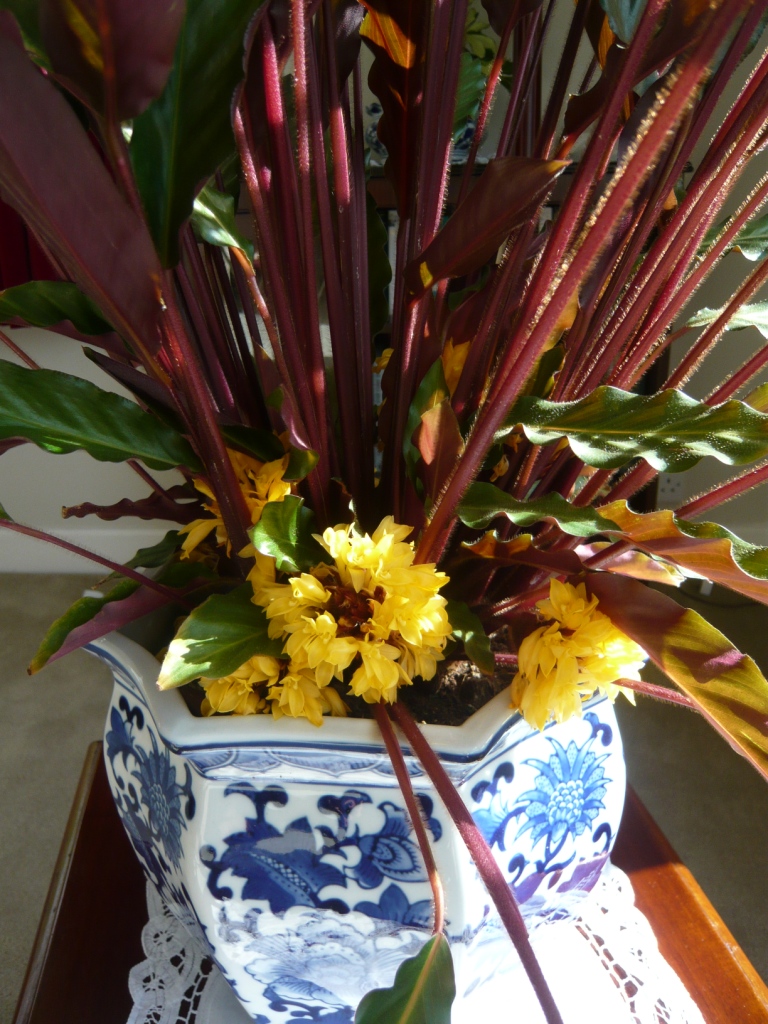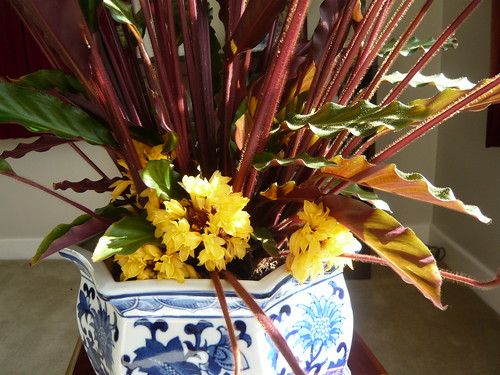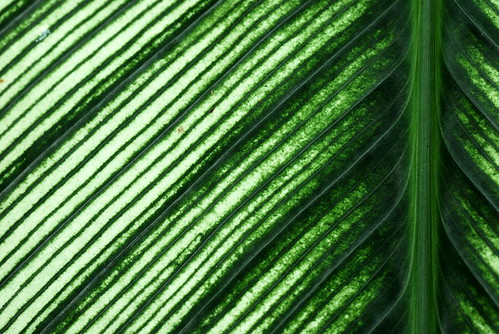
Growing Calathea ‘Wavestar’
Calatheas are a group of plants native to the tropical Americas. They are popular as pot plants for the house or conservatory due to their decorative leaves that often react to touch or light.
Calathea Wavestar
- Calatheas are now being cross bred amongst their 50 or so species and Wavestar is one of the results.
- The leaves are soft,ridged, purple underneath and green when open in full light. The leaves close up in the evening.
- I was surprised to see the yellow flowers at the soil level last time I watered this plant see above.
- This variety is said to originate from Bahia in Brazil but if so why has it been granted PBR status?
- The plant breeders rights are owned by Decorum a Dutch company
Decorum Plants Calathea Wavestar
- ‘Decorum Plants’ are a brand name that claims to be a leading specialist in the trade sector for more than 10 years.
- Decorum Plants represents a selection of 1200 decorative and flowering potted plants under the well-known (to some)‘Decorum flag’.
- Supplies to the trade via a web link may provide more information
Growing Calathea
- Calathea need good light but avoid direct sun as it will scorch or fade the leaf
- Keep soil moist and humid throughout spring and summer with less watering in winter.
- Keep your Calathea warm preferably 15-23ºC.
- Feed with a dilute fertiliser weekly during summer.
- Soil should be light and free draining.
- Repot annually and propagate at that time by division. Repoting tips
Calathea varieties for Growing Indoors
- Calathea makoyana the Peacock plant, features purplish coloring on the undersides of leaves, with white and green on top. Known as the peacock plant.
- Calathea zebrina the zebra plant, has green markings on the leaf top and purple leaf undersides.
- Calathea insignis also called Rattlesnake plant, is a bushy species with narrow, tapering erect foliage.
- Calathea crocata has plain leaves but displays of upright orange-red flowers.
- Calathea ornata. Reddish marking on leaf tops with purple undersides.
- Calathea louisae has leaves broadly ovate, dark green with light green splotches along the midrib.
Other Facts about Calathea
- Calatheas are closely related to Maranta, and often confused with their species Ctenanthe and Stromanthe.
- Calathea can thrive in bottle gardens and terrariums due to their liking of high humidity.
- Calatheas are propagated by divisions or tip cuttings, with nodes to form the roots.
- Mist and reduced light are important during the early stages of propagation.
Calathea Photo Credits
Korbmaranthe, Calathea bachemiana by Dandelion And Burdock, CC BY-NC-SA 2.0
Calathea majestica ‘Albolineata’ by tuis CC BY-NC-ND 2.0
Calathea makoyana by Bárbol,CC BY-NC-SA 2.0
Calathea zebrina (Sims) Lindl by adaduitokla CC BY-NC-SA 2.0 ‘Calathea zebrina (Sims) Lindl. Marantaceae. CN: Zebraplant. Native of southeastern Brazil. Ornamental. Low rosette herb with striped pattern on leaves; leaf texture velvety. Growth habit clumping up to 90 cm tall.’





One thought on “Growing Calathea ‘Wavestar’”
Comments are closed.